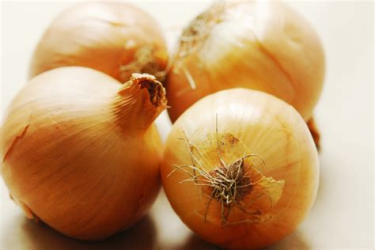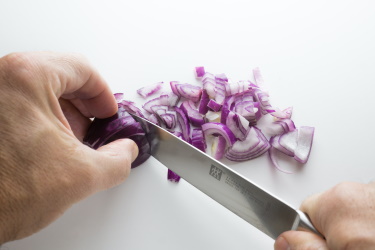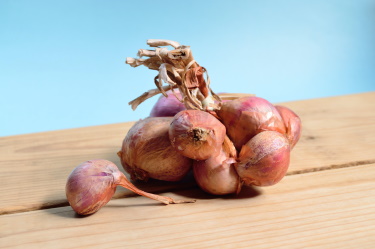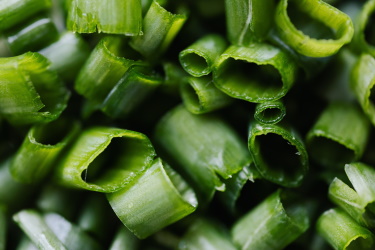
Types of onions
Just like any other vegetable, there are plenty of different types of onions out there. So, before thinking about growing onions, you should get to know about the many variety of onions, and some of the main differences between them.
Then, we are going to introduce you to the most popular types of onions. You may know most of them, so this could be a good way to remember those types of onions that you may have forgot about.
Sweet onions: could be the most used onion for cooking. One of those foods that can never be missing in a salad (besides tomato and lettuce). The most common varieties of sweet onions are Vidalias, Walla Wallas and Mauis. Its characteristic pale yellow skin and its amazing flavor will never disappoint.

Yellow onions: it is probably the best choice for caramelizing. You can also use it in every recipe as it matches with everything. Whenever it is not specified what type of onion you need to use, yellow onions are your safest bet.
Red onions: ideal for salads or pickling. Its peculiar reddish tone is well known in our country because they pair well with strong flavors. Its raw and spicy taste is the perfect combination for your best recipe.

White onions: go well in salads as well, although it is for the Mexican cuisine that this type of onion is known. They are rarely raw (sometimes you can get a sweet taste), and its freshness leaves no aftertaste. This is why it is commonly used with tacos, guacamole, or served caramelized in barbecues.
Shallots: another mild onion. They are half onion, half garlic. That is the reason for its bulb-shape. They are mostly used in European countries like France or Italy. You should try them on sauces and dressings.

Scallions: its shape might remind you about leek, but it is just another variety of alliums. They can be eaten in different ways: cooked in a Mexican burrito or raw in Asian cuisine. It is precisely in this type of cuisine where they are usually employed. They have a mild flavor like shallots and other types of hybrids.

Table of Contents
Planting onions from seed
Growing onions is not an expensive venture. However, it requires work, especially if you are planning to grow onions from seeds, that is to say; from the beginning.
It is always a good idea to start DIY projects or learning about gardening, particularly when we are talking about growing onions: they are essential for numerous plates. With some effort and dedication, you will have your appetizing onions sooner than expected.
Onions can be grown three ways: by sets (tiny bulbs), transplants and direct seeding.
Onion sets are the most popular way to grow them, you’ll have better results transplanting seedlings you start indoors.
First, you need to be equipped with the right material. We made a list of the most important ones. We recommend to have all of them available because the tasks will be easier and results better:
Onion seeds
Multi-purpose compost (High Quality)
Seed tray or small pots
Trowel
Soft strings
Watering can
Hoe
The first step is already known: start sowing seeds in the pots you have already prepared with the compost. Seeds are very tiny so 1 inch of separation between them should be enough. Cover it with soil and compost we find it necessary. The best time frame to do it goes from mid-March to mid-April. As longer day’s tend to produce a better harvest.
Then, when the stem starts to grow; transplant the seedlings into a new compost and sow them in your garden (or the place reserved for its growth), with around 5 inches of separation.
It is time to water our plants. A watering can with a rose will help us during this process (I do not know anybody who cannot get one). Onions do require a lot of water so do it every time you see dry soil. It will give important vitamins and benefits to the roots and bulbs… I bet you already knew that! Another tip is to test the ph of the soil.
Onions grow best in a ph of 6.0 to a 7.0.
Use the hoe to get rid of weeds once they begin to appear because they may steal the vitamins and the benefits of the composed soil from our onion plant. Finally, set aside the soil from bulbs in late summer to let onions receive sun rays. This will deliver the final color to our vegetables. Pick them up carefully a few weeks later when stems are completely bent over, and be proud of your work.
Growing onion tips
The more information we have about something, the better result we get. That is why it is very important to know some basic tips and tricks about growing onions. They might not be crucial or decisive for the final result, but they will definitely deliver greater alliums.
We all know onions are good for us because they provide us with some good benefits such as tons of different nutrients or helping to control blood sugar. So let’s get the best of them.
The first advice is not a secret: using fertilizer will assure that our onion will grow. Also, it is not bad to use it. It is an aid that we give to the soil to make the onion planting process easier. If you want those really big onions, make sure to fertilize every 2 weeks. It will make a big difference in the size of your harvest. For early to mid summer provide a nitrogen based fertilizer.
Use ammonium sulfate if your soil is alkaline, ammonium nitrate if your soil is acidic.
Then, we suggest you to not water your seedlings a lot. If they are kind of dry, it will encourage roots to look for humidity and nutrients in deep soil. This search of moisture eventually leads to the development of a secondary root system. However, do not leave your plants without water for long periods of time. Otherwise, they may die or suffer great damage.
Another great recommendation is to plant your seeds in early spring (February-March) instead of March-April if possible. This can only be done if the weather is not too aggressive during those months in your area. Tops grow in cool weather while bulbs need warm temperatures.
Finally, you should learn more about what type of onion you want: some onions need 9 sun hours per day, others need much less. Investigate, because each one has its own properties.
Growing onions from onions
Onions are delicious food that goes well with pretty much everything. You can find it in burgers or in the most sophisticated recipe of the world… or you can just use it to make other onions grow without seeds!
How?
It is so easy that it could be a kindergarten experiment. Start by chopping the bottom of your onion (about 1 inch), and take out the first peel. Then, let it dry for a day. After that, poke 4 toothpicks halfway into the onion, drawing an “X” shape. This will help us with our next step, which is putting the bottom of the onion into water.
This can be done by hanging it over a glass of water using the toothpicks as support. The bottom of the onion must be the only part in contact with water. Leave the onion in this position for 3-4 days.
[embedded content]
Once we get to this point, it is time to transplant it into a pot. Fill 50% of the pot (with holes in the bottom if possible) with well-draining soil. Place your chopped onion (always facing the cut part up), and fill the pot up.
If you are going to keep it indoors, any time of the year is OK. If not, the best moment will always be spring. Water it repeatedly and especially at the beginning of the process. Soil should always be moist, check it out every day. You can also apply nitrogen fertilizer if you find it helpful. A good way to do this is once every two weeks.
If you are going to grow onions outside, it is necessary to watch them out more regularly. For instance, weeding your garden is essential for the growth of the plant. Pull them as soon as you notice their presence.
Finally, you will be able to harvest your onions when they begin to form flowers (in summer if outside). Each onion can give up to 6 more onions and it takes around 3 to 4 months.
Common problems with growing onions
Growing onions is not one of the most difficult things in the world. However, you may experience some trouble (which can be solved with guidance). That is why we are going to introduce you to the most common problems in the process of growing onions and its possible solution.
The troubleshooting list starts with those plants that produce too many leaves without bulbs. It is a common issue when we plant onions in the wrong season. For example, if we plant onions in summer, it will give a lot of leaves because of the warm weather but it will not form bulbs as they need cooler temperatures.
Another frequent problem is worms and bugs. As the onion leaves grow you will find tiny little black onion thrips which will suck out the sap from their leaves. They are incredibly difficult to find as they hide in between the folds of the leaves.
Small yellowish-brown flying insects that feed on leaves and can cause twisting and curling of leaves. On going attacks will prevent the plants growth. You need to inspect periodically. Pay close attention for aphids as well.
It is something that almost every plant has to deal with, and the answer to this is always the same: remove the infested plant or area and apply pest control products. I did a wonderful post on this subject.
Even so, the most common problems with growing onions are related to leaves. There are numerous leaves diseases, we expose the most popular ones here:
SYMPTOMS/TREATMENT
Silvery and white streaked leaves
Leaves distorted Wash with water and use insecticidal soap
Leaves die back from tips
Root turn pink to red to yellow Drain soil optimally
Leaves with yellow or white spots Plants need to dry between irrigation
Stalks bend and die
Airflow is very necessary
Leaf tips turn brown Take flies away from your plants with insecticide
Leaves fade, wilt, and yellow Remove and destroy infected plants immediately
Leaf tips die
Remove soil or you will not be able to plant there again
Leaves yellow, bulbs have soft, watery rot and decay
Bulbs may be speckled black Remove infected plants
Rotate crops
Remove weeds
Onion root maggots: Eggs are laid around the base of onion plants. The larvae hatch and burrow throughout the stems, feeding on the plants below the soil and eventually destroying the plants. Rotate plants to avoid infestation. Covering seedlings will prevent eggs from forming and being laid. Diatomaceous earth is a wonderful organic solution to this problem.
There can be more problems, such as small bulbs. Small bulbs can be prevented by fertilizing twice a month. In my experience it really has proven to be very effective with my fall harvest. As you can see, solutions are very similar; so what we recommend is to follow the guidelines about growing onions.
Growing onions in containers
Growing onions in containers is a great option for those who prefer lower quantities of the final product, but they like to be more implicated in this project. The way to grow onions in containers is very similar to what you do on the ground. This type of growth is usually done indoors. However, you can do it outdoors if you follow the same common growth guidelines.
Well, the only difference is the pot. Choose a wide pot with holes in the bottom to help drainage that lets you grow a decent quantity of onions: at least 10 inches if possible. It is OK to prefer lower quantities, but we should grow a decent quantity, something that is worth the time spent on it.
You can also grow onions in a plastic tub. It is cheaper but you will have to do the holes in the bottom yourself.
Transplants result in larger bulbs as opposed to sets. You can purchase transplants or start some indoors from seeds. You can start them 10 weeks before your transplant date.
After this, the last decision you need to take is when you are going to grow your onions. As we said before, this can be done both indoors or outdoors. The only condition is that the pot needs to receive at least 8 hours of light every day. If you find this impossible due to your location, you can substitute those sun hours with fluorescent bulbs. We know it is not the same, but it will certainly solve the lack of sun hours needed and you can adjust it the way you prefer.
Last but not least, do not forget to water them every day. As we have remarked many times in this article, we need to keep the soil moist (we need to be careful to not overdo it). We measured that about 2 or 3 inches of water per week is perfect.
Now that you know how to grow onions in a pot or tub, you do not have any excuse to not do it. I dare you to show your family and friends your gardening potential!



